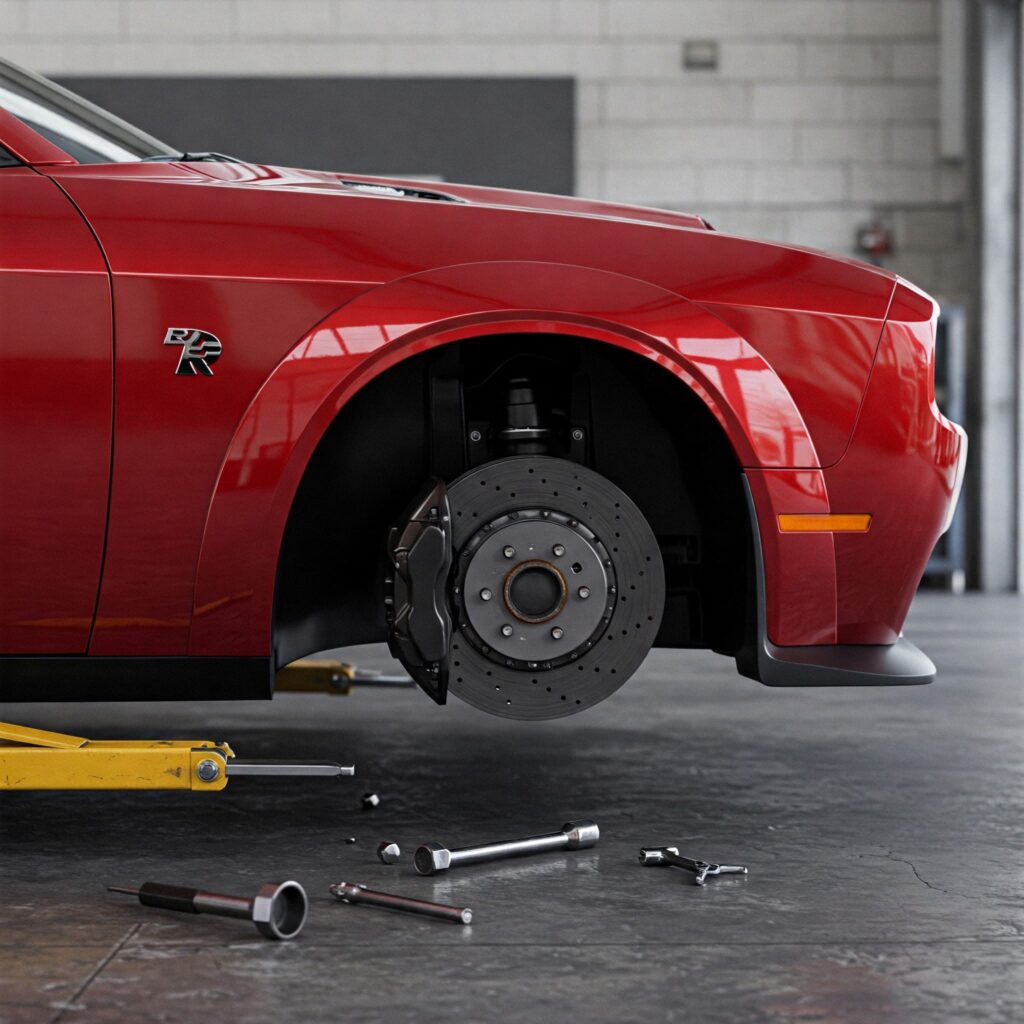Breaking in brake pads properly is essential to ensure optimal braking performance and extend their lifespan. This guide will outline the types of brake pads, explain the role of friction, and provide detailed steps for breaking in ceramic brake pads. You’ll also learn why cleanliness during a brake job is important and how effective brake cleaners like AMSOIL Brake and Parts Cleaner can help.
Brake pads are a critical part of your vehicle’s braking system, and their performance varies based on type, materials, and application. Selecting the right brake pads tailored to your vehicle and driving style is an important first step.
Types of Brake Pads
Organic Brake Pads
Organic brake pads are made primarily from non-metallic materials such as Kevlar, carbon, and fiberglass. They are softer and quieter than other options, making them more comfortable for everyday driving.
Key Features:
- Composed of non-metallic fibers
- Generate less brake dust
- Produce minimal noise
Pros:
- Quiet operation
- Affordable price point
- Minimal strain on rotors
Cons:
- Wear out faster
- Perform poorly under high heat
- Not suitable for heavy loads or high-performance driving
Semi-Metallic Brake Pads
Semi-metallic brake pads combine metallic and non-metallic materials, providing a middle ground between performance and durability. These are commonly found in many vehicles.
Key Features:
- Blend of metals and synthetic components
- Effective for most vehicles
Advantages:
- Strong stopping power
- Improved durability compared to organic pads
Considerations:
- May create more noise or dust than ceramic options
Ceramic Brake Pads
Ceramic brake pads are highly regarded for their consistency, durability, and heat management capabilities. They’re often chosen for their longer lifespan and minimal maintenance needs.
Key Benefits:
- Excellent performance under varied conditions
- Long-lasting material
- Less visible brake dust
Technical Advantages:
- Superior heat dissipation reduces the likelihood of brake fade
- Often create white or light-colored dust that is less noticeable on wheels
Understanding the Coefficient of Friction
The coefficient of friction plays a key role in braking efficiency. It reflects the resistance generated when one surface moves against another, such as the brake pad against the rotor.
Definition and Importance
This measurement determines how effectively your brakes can stop your vehicle. Higher friction results in better stopping power. For safety, having consistent, high friction between the pads and rotors is essential.
Simple Example
Picture sliding ice versus sandpaper on a table. Ice moves easily with low resistance, while sandpaper resists due to its rough surface. Brakes resemble sandpaper in needing high friction to function effectively.
How to Choose the Right Brake Pads
The brake pads you select should match your vehicle, driving conditions, and personal habits. Consider the following factors before making a decision:
- Vehicle Type: Larger vehicles may require semi-metallic or ceramic pads.
- Driving Style: Aggressive braking or frequent braking in traffic may call for stronger pads.
- Road Conditions: Consider pads that fit city traffic, long highway drives, or off-road use.
Steps to Break in Ceramic Brake Pads
Breaking in, or “bedding,” new brake pads ensures they bond correctly to your rotors, reducing wear and improving performance.
Why it’s Crucial
A proper break-in process reduces noise, smooths operation, and maximizes the life of both pads and rotors.
Step-by-Step Procedure
- Perform about 20 gradual slow-downs from 50 mph to 20 mph.
- Avoid sudden, hard stops during this phase.
- Refrain from coming to a complete stop unless necessary.
By following these steps, the material from the brake pads evenly deposits onto the rotors, resulting in better performance.

Maintaining Cleanliness During a Brake Job
Keeping all brake components clear of contaminants like grease is essential. Dirt or grease on rotors or pads can interfere with the braking process, reduce effectiveness, or ruin the break-in procedure.
Tips for Cleanliness
- Ensure all surfaces are clean before installing new parts.
- Use effective cleaning solutions like AMSOIL Brake Parts Cleaner to remove dirt and oils.
Product Highlights:
- Sprays under high pressure to remove debris effectively.
- Dries quickly, leaving surfaces ready for use.
- Dissolves grease, leaving a clean finish.
Indicators of Brake Pad Wear
Keep an eye out for common signs that indicate it’s time to replace your brake pads:
- Squealing or grinding noises
- Reduced braking responsiveness
- Visual thinning of the brake pad material
Regular inspections—roughly every 20,000 to 30,000 miles—can help identify issues early. Professional mechanics can ensure pads are correctly installed for the best performance, though DIY replacements are possible if done carefully.
Brake Fluid Maintenance
Brake fluid is a vital part of the braking system, as it transmits hydraulic pressure generated when you press the brake pedal.
When to Replace Brake Fluid
Experts recommend changing brake fluid every two years or 30,000 miles. Watch for issues like discoloration or diminished braking performance as signs of contamination.
Options for Brake Fluid
Products like Valvoline Professional Series DOT 3 Brake Fluid and AMSOIL DOT 3 and DOT 4 Synthetic Brake Fluid ensure proper system function. These high-quality fluids provide consistent performance under varying temperatures and conditions.
Noise and Vibration Issues
Noisy or vibrating brakes are often caused by misaligned pads, excessive wear, or contamination of the braking surface.
Common Fixes
- Verify proper pad installation.
- Keep rotors and pads free of grease or dirt.
- Choose high-quality pads to reduce noise and vibrations.
If these issues persist, consult a professional for inspection and repair.
Brake Pad and Rotor Coordination
Ensure compatibility between your pads and rotors. Matching materials and designs enhance braking effectiveness and minimize wear.
Discover comprehensive insights into brake pad technology and how to optimize their performance by clicking here on Hot Rod.

Replacing Rotors
Rotors should be replaced when they show signs of warping, deep grooves, or significant wear that interferes with their function. Understanding how to break in brake pads and maintain clean, functional components ensures your braking system performs at its best. By following the steps outlined in this guide, you can improve safety, prolong the life of your brakes, and avoid unnecessary repairs. For more details on high-performance brake fluids, explore Valvoline Brake Fluid here or AMSOIL DOT 3 and DOT 4 100% Synthetic Brake Fluid here.
